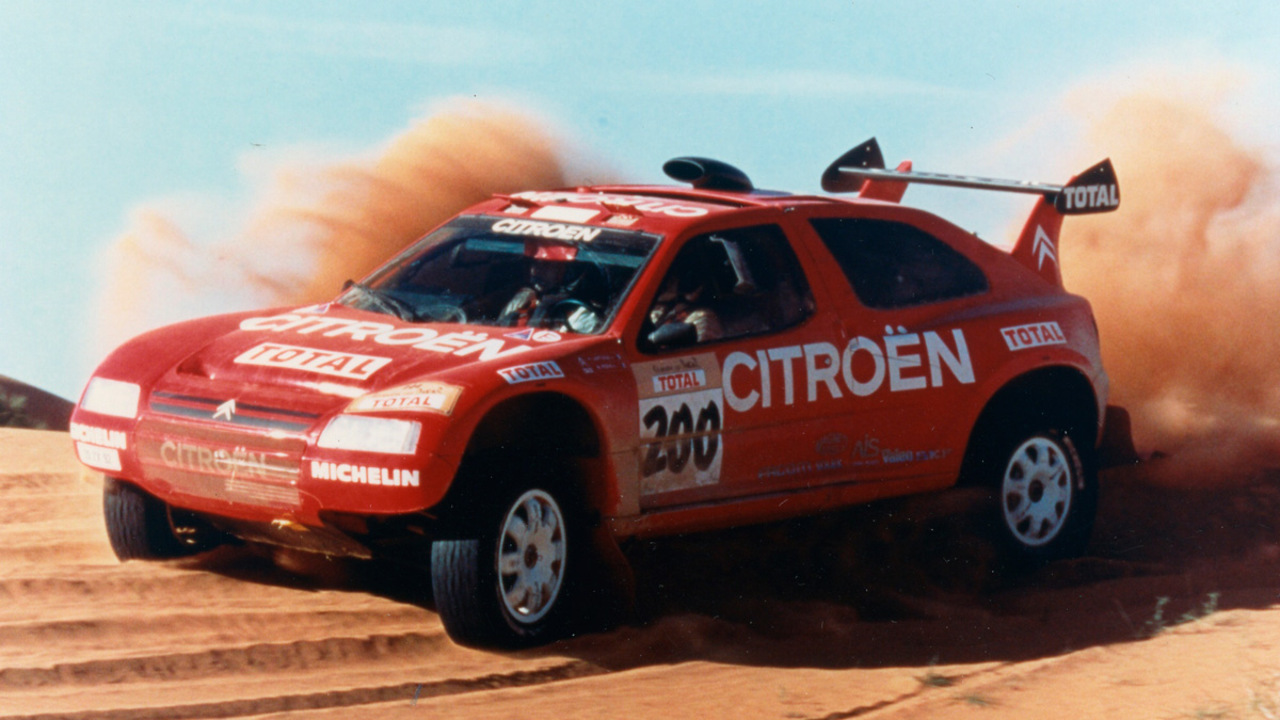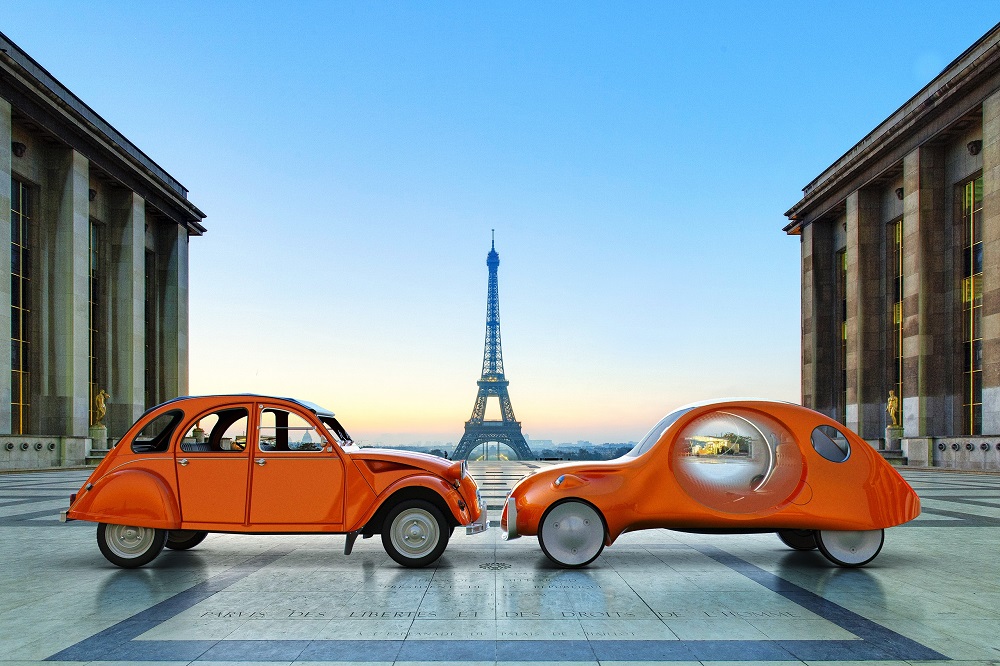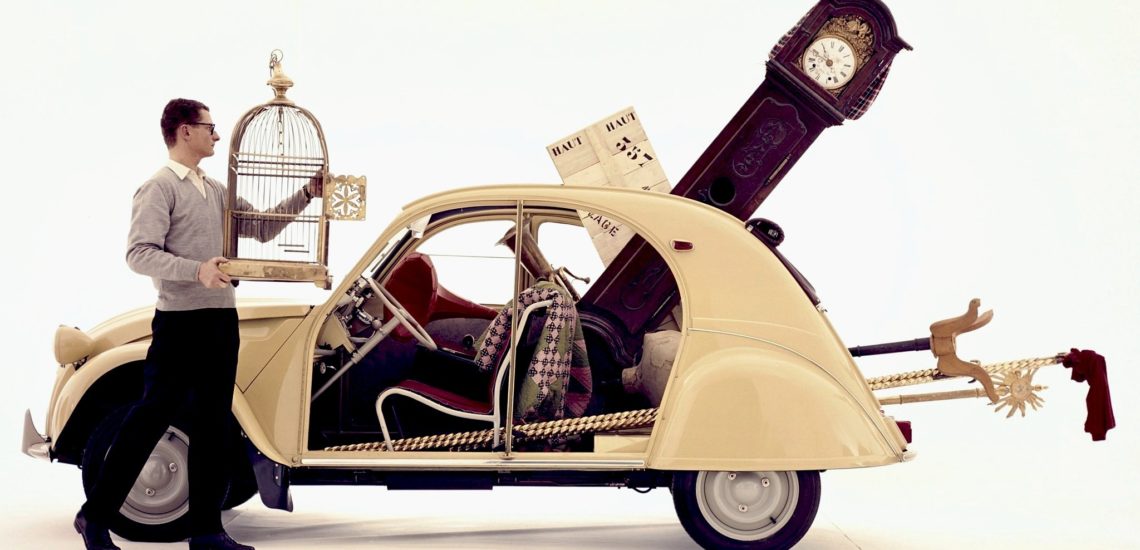When the founder of the Citroen brand died in mid-1935, the company didn’t disappear. Cars of this brand continued to drive on the roads of France and the rest of Europe. In this article, we will tell you how the history of Citroen’s car production developed, and why this brand is in demand today. Make yourself comfortable.
After the death of the master
Excursions at the factories of Citroen ceased – for tourists and for eminent guests, which had previously been practiced quite widely. The group of musicians of the Citroen Fanfare orchestra was also disbanded – there was no one to welcome. Only three years later, in 1938, a small bust of Andre Citroen was installed on the Javel Embankment. Nevertheless, life continued, and the production of Citroen brand cars didn’t stop for a minute. After all, the triumphal march of the famous 7CV Traction Avant model on European roads had already begun. It was included in the list of the ten best cars in the world, released in the 20th century. Back in June 1935, the Traction Avant participated in the automobile Tour de France and overcame more than 5,000 km in France and Belgium in 77 hours. In October of the same year, it passed 5,400 km from Paris to Moscow and back in 81 hours.
It should be noted that all funds invested in the development of the 7CV Traction Avant quickly paid off and after only two years began to bring new owners only profit. At the same time, the Michelin company wasn’t a competitor to Citroen, so it continued to support automotive production. Technical innovations were introduced, but advertising of products was stopped.
New Director of automobile plants Pierre-Jules Boulanger
The team of engineers and designers was led by Andre Lefebvre. The “administrative engine” of these projects was the new Director of automobile plants Pierre-Jules Boulanger. But the development itself continued in the framework of the road transport development concept, as it was seen by the late A. Citroen.
In 1937, Citroen car designers released the first prototypes of a new project, which was first called “Very small car” (“Tres Petite Voiture”). The developers positioned it as a French “people’s car” in spite of the Volkswagen, widely promoted at the time in Germany. But the French are a less pretentious nation than the Germans. Therefore, the little car was nicknamed “Two steam horses” (“Deux chevaux”) for the taxable engine capacity of two horsepower. A new production model, the 2CV, was presented at the 1948 Paris Motor Show. It became the best-selling and most “long-lasting” model of Citroen. Over 42 years (from 1948 to 1990), more than 5.1 million cars were produced. The famous “umbrella on wheels”, the Citroën 2CV became the French VW Beetle. Simple and cheap, it quickly won the love of buyers.
Then, the DS model appeared, developed at the insistence of the head of the enterprise Pierre Boulanger. Back in 1938, thinking about what car should replace the just won the popularity Traction Avant, Boulanger created a company concept of a mass-produce executive car. The development of the design and construction lasted about ten years with a break during World War II.
The presentation was in April 1955. The futuristic design of the DS produced a real shock. Everything hit the target, even the name consonant with the French word Déesse (“goddess”). It became clear that the new model would be commercially successful. In the first hour of the exhibition, about 800 orders for that car were received, on the first day – about 12,000, and in the first week – about 80,000. In addition to its futuristic appearance, the DS-19 featured a number of technological innovations. Among the latter – the use of aluminum and plastic alloys in the production of parts, disc brakes, power steering and brake booster. However, the main highlight of the car was the hydraulic system that controlled the adaptive hydropneumatic suspension. It provided not only smooth running, but also allowed to raise or lower the car body.

The DS gained worldwide fame in 1962, after the attempted assassination of President de Gaulle. Riddled with gunfire, with punctured tires, the car didn’t get off the road and managed to take the president of France out of the firing. Is it any wonder that French leaders still love Citroen cars?
By the way, it was thanks to Pierre Boulanger that all the plants of Citroen weren’t nationalized after the Second World War and remained in the ownership of the Michelin concern. Boulanger sabotaged German orders during the Nazi occupation of France.
Financial and organizational control by Michelin worked in the car company Citroen’s favour. For several post-war years, it became the most successful automobile company in France and, in terms of production, was second only to the nationalized concern Renault.
The Citroen concern in the second half of the last century
Throughout the 1950-60s, Citroen continued to produce front-wheel drive cars, which were the development of the Traction Avant. These cars were developed by a team led by Andre Lefebvre, the core of which was formed by Andre Citroen in the 1930s. The 1960s were years of active growth for the company. A contract was concluded with the Yugoslav company Tomos on the production of the famous 2CV at its facilities. In Brittany, the production of the model Ami 6 was established. In addition to Europe, the company opened production in Canada, Chile, Africa. At the same time, Citroen acquired a controlling stake in Maserati. A contract was signed with the German company NSU-Motorenwerke to develop a new engine, the production of which was to be established at the joint production, Comobil, in Geneva.
In 1975, in connection with the end of production of the DS model, presidents’ car, as it was then called, the factory on the Javel Embankment was closed. More than three million cars came out of the gates during the entire operation of this enterprise.
In the 1970s, the Michelin company decided to focus on the production of its main products (tires) and began negotiating with various car companies in order to sell Citroen plants. In addition, the cars consumed too much fuel and, against the backdrop of the oil crisis, began to sell worse. As a result, in 1976, there was a merger of automobile plants Citroen and Peugeot. Peugeot acquired 90 percent of Citroen’s shares from Michelin, and 10 percent were issued on the free market. Under the agreement with the French government, the merger was not to lead to the exit of either Citroen or Peugeot cars from the market. The joint venture uses common technical, financial and administrative resources to reduce the cost of production of each model line. But each of the brands is still sold separately by its distribution network. They really compete in the domestic and international market.
The 1980s became not only years of production improvement for the company. There was a rebranding. Now, instead of blue and yellow colors in the logo, Citroen used white and red. In addition, the head office moved to the suburbs of Paris, namely to Neuilly-sur-Seine. Increasingly, the company began to resort to computer modeling and eventually acquired the most powerful at the time supercomputer Cray XMP/14. Total investments in the development of the concern during these years amounted to 7.5 billion francs, including 1.2 billion for development and research. Investments were not long in coming, and the consumer received such model as the XM.
In the early 1990s, Citroen presented its next novelty, namely the ZX model. By the way, it was with this model that Citroen officially returned to motorsport, having created the ZX Rally Raid team. Taking care of quality improvement, the company paid much attention to the training of staff. As a result, in 1992, the Citroen Institute opened its doors, the main task of which was to improve the skills of the company’s employees. Consumers also weren’t deprived of attention during that period. Such models as the Citroen Xantia, the Saxo, the Xsara, the Evasion, entered the market.

But the state of affairs was radically changed in 1997, when the post of the concern’s CEO was taken by Jean-Martin Foltz, who decided to “heal” the financial side of the enterprise, devoting all his efforts on creative design activities, to make the maximum number of differences in cars of two brands represented by the concern. For Citroen, that decision was truly the beginning of a revival. In 2000, more than a million cars were sold.
Citroen enterprises in the 21st century
The 00s started for Citroen with a triumph – the Citroen C5 was presented at the Paris Motor Show. The Citroen C5 was available as hatchback and wagon styles. In addition, it was equipped with the latest hydraulic suspension Hydractive III with Sport and Comfort modes and quite powerful engines, as a V-shaped “six” of 3.0 liters and 210 hp and a diesel of 2.2 liters and 136 hp. It was with this new model that the concern returned to its usual model designation, namely alphanumeric.
A little later, the Citroen C3 and the concept C-Crosser, an advance in the creation of cars, were presented at the Frankfurt Motor Show.
For the first time, in the PSA group, there was a new robotic gearbox – the SensoDrive. Combining the advantages of mechanical and automatic gearboxes, it found its place under the hood of the C3 with a 1.6 16V engine.
2006 was the beginning of the C4 Picasso line-up’s production. In 2007, the production program of the company also provided a place for the first crossover – the Citroen C-Crosser. The seven-seat C-Crosser was equipped with a basic turbocharged diesel of 2.2 liters with a capacity of 156 hp. However, the crossover was also equipped with a gasoline engine with a capacity of 170 hp (2.4 l).
The C line-up, which was launched with the C5 mid-range sedan, has grown to the size of the model range of advanced German manufacturers in just a few years. The minivan C8, the compact hatchbacks C4, C2, the dream of Moscow women drivers C3, the tiny C1 and finally the giant luxury sedan C6, which may repeat the success of the legendary “Goddess” Citroen DS.
In 2019, Citroen celebrated its centenary. For a century, cars marked with a double chevron drive on the roads of the world, cars of mass production, high quality, cars that constantly use the latest achievements of science and technology. That’s the way they were conceived a hundred years ago by a short, stout man with a neat moustache, who looked merrily at the world through the glasses of his pince-nez. These cars remained the same, despite thundering over the world wars and crises. Perhaps this is the best memory of their creator Andre Citroen. And probably the very long memory. After all, Citroen cars have long taken their place among the symbols of France.
Andre Citroen’s name was embodied not only in cars. A beautiful and modern park, laid out on the former Javel Embankment, renamed the Quai Andre Citroen, on the site where there was a car factory, was named after him.

We remind you that when driving a Citroen car, you must have a driver’s license. Of course, an international one is better. This driver’s license is quickly and easily processed on our website. Save your time and money – make an order for an international driver’s license right now!

Published December 30, 2019 • 9m to read






